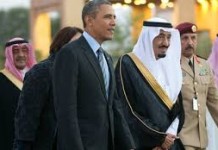Context
 The Orakzai tribal district of the Federally Administered Tribal Areas (FATA) has been in the news for the last several months, as it has become the key stronghold of Tehreek-e-Taliban Pakistan (TTP) and other Al Qaeda affiliated groups. After the Pakistan Army and Frontier Corps launched an operation in South Waziristan, militants in large numbers slipped in to Orakzai tribal agency. The agency is the home district of TTP founder Baitullah Mehsud and his successor Hakimullah Mehsud, including Waliur Rahman Mehsud and the TTP master-trainer Qari Hussain Mehsud. This analysis evaluates the status of militancy in Orakzai agency.
The Orakzai tribal district of the Federally Administered Tribal Areas (FATA) has been in the news for the last several months, as it has become the key stronghold of Tehreek-e-Taliban Pakistan (TTP) and other Al Qaeda affiliated groups. After the Pakistan Army and Frontier Corps launched an operation in South Waziristan, militants in large numbers slipped in to Orakzai tribal agency. The agency is the home district of TTP founder Baitullah Mehsud and his successor Hakimullah Mehsud, including Waliur Rahman Mehsud and the TTP master-trainer Qari Hussain Mehsud. This analysis evaluates the status of militancy in Orakzai agency.
Analysis
.jpg)
Orakzai is the only tribal agency of FATA that does not have a border with Afghanistan. Kurram Agency is located in its west while on the north lies the strategically important Khyber Agency. North Waziristan is situated in the south and in the lower southeast is the Frontier Region (FR) Kohat. The provincial capital of Khyber-Pakhtunkhwa province, Peshawar, is to the northeast of the Orakzai agency. The shifting of TTP and Al Qaeda militants to Orakzai has serious strategic implications. Because of its size launching a large scale military offensive in Orakzai agency has been difficult and thus the decision to relocate there appears to be well calculated by the TTP and Al Qaeda strategists. Being away from the border also provides protection from the reach of the American drones as majority of these strikes have occurred in North and South Waziristan.
There are 14 different tribes residing in Orakzai and the Taliban have set up their organization based on this tribal structure. A Taliban commander covers each one of the larger tribes. The overall commander of the Taliban in Orakzai is Saeed Hafiz. Orakzai agency has been divided into three zones for military offensives. These include:
Upper Orakzai: The military operations particularly targeted the Dabori and Ghiljo areas. Ghiljo is the headquarters of Upper Orakzai and was under complete control of the Taliban for some time, along with Dabori.
Security forces have been able to take back the control of Dabori and Ghiljo from the Taliban. But apart from those areas, the Taliban are in full control elsewhere. For instance there are some 40-42 villages surrounding the Dabori while the security forces only have influence of 4 villages. It is important to note that during the military offensive the Taliban remained the major authority in the area, with Taliban ‘courts’ publicly handing down punishments, including chopping off the hands of a few criminals.
Central Orakzai: Meshti Mela and its surrounding localities were targets of the military operations. In Central and Upper Orakzai, Sunnis are the majority ethnic group and Al Qaeda and the Taliban enjoy popular support. The main town of Meshti Mela has been taken back from Taliban control and is now secure. However, in the rest of Central Orakzai the Taliban and their affiliates are still present.
Lower Orakzai: The areas that form the border with Khyber Agency to the north and Peshawar to the northeast have been the targets of military operations. Kalaya located in Lower Orakzai is the overall agency headquarter. The rest of the Lower Orakzai has not been targeted by the military as it is mostly populated by Shiite ethnicity who are strongly anti-Taliban and against the Wahabist ideology propagated by Al Qaeda. Therefore, there have been fewer sanctuaries and strongholds for the Taliban and Al Qaeda in this area due to the lack of local support.
Lower Orakzai is to a large extent is in the control of the security forces. However, this by no mean implies that the militancy is over. In fact, in the areas of Lower Orakzai, which border FR Peshawar and FR Kohat, the militants have a strong presence but whenever they are pursued they cross over in to other areas. The mobility of the militants is one of their more frustrating assets for the authorities. As a result of the pressure in Orakzai a large number of militants have shifted to the neighboring Khyber Agency, particularly to its northernmost Tirah valley. The valley borders Afghanistan and the infamous Tora Bora mountains.
The Pakistani military declared victory against the militants in Orakzai agency in early June 2010, citing the capturing and destroying of some of their bases and training facilities as well as killing important insurgent commanders. However, such claims have been made in the past while the militancy has proven to be resilient and is in one way or the other connected to the fresh wave of terrorist attacks across the country. Accounts by Orakzai tribesmen reveal that Taliban and Al Qaeda fighters were once again holding their old fortes in Ghiljo, Daburi and they were not defeated as the military claims. These tribesmen further inform that although the military operation might have dislodged the parallel governance structures, like Taliban courts and jails in some areas, the militant presence is still very much there.
Before fully completing military operations in the Orakzai it would be difficult for the army to take on another undertaking in North Waziristan, as the US has been demanding. North Waziristan is considered the hub of the dreaded Afghan Taliban affiliated militant Haqqani Network, led by Sirajuddin Haqqani. The Network has inflicted heavy damage on US-NATO forces in Afghanistan using North Waziristan as its base.
Tell Us What You Think
Feedback@politact.com



